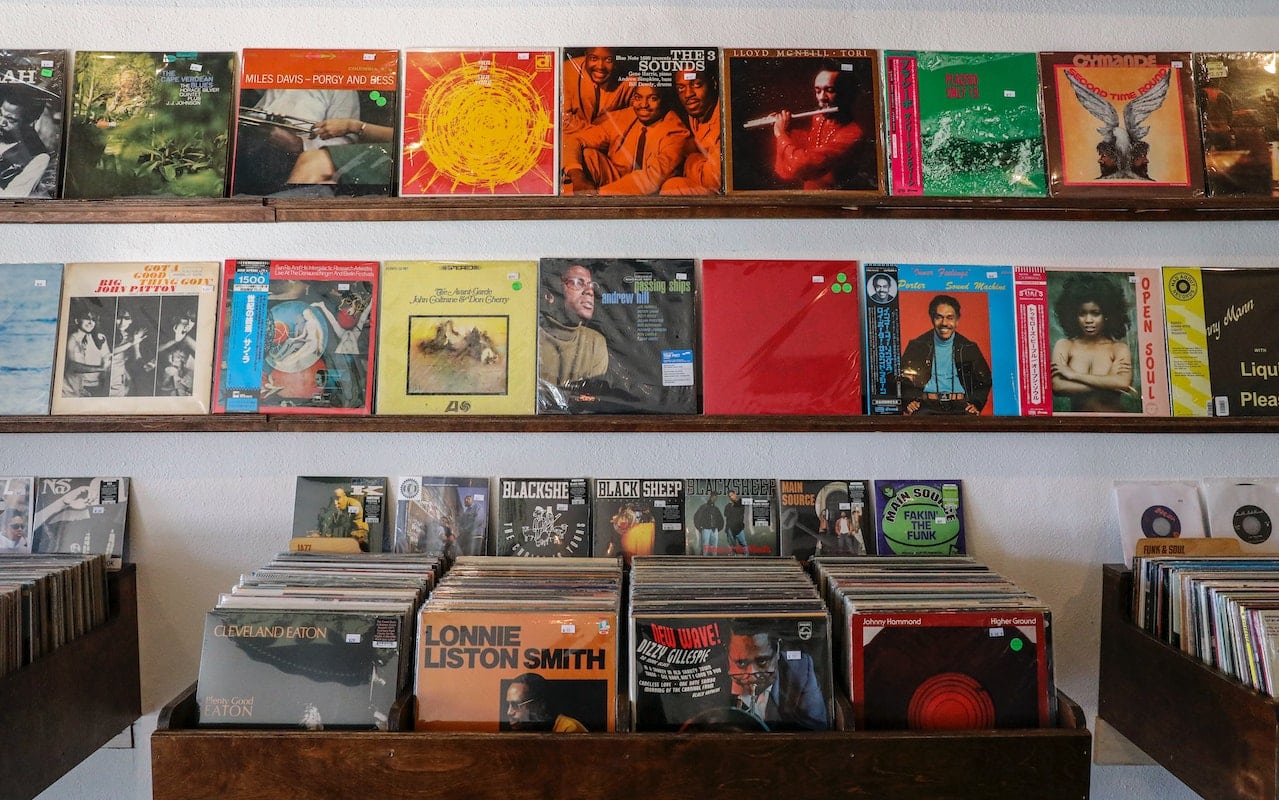Choosing a turntable in 2025 can feel overwhelming. Beyond the visual aesthetics, a complex array of technical features influences both the sound quality you'll experience and the way you interact with your vinyl collection. Whether you're a curious beginner taking your first steps into analog audio or a seasoned audiophile seeking to upgrade, understanding the key components and design choices is crucial for making an informed decision. This guide delves into essential turntable features like tonearm design, platter material, cartridge type, and operation mode, explaining how they function and why they matter, ultimately helping you navigate the market and align your choice with your personal listening priorities and budget.

The Tonearm: Guiding the Groove
The tonearm might seem like a simple lever, but it performs a critical task: holding the cartridge and stylus assembly precisely within the record groove, applying the correct downward force (tracking force), and allowing the stylus to follow the groove's path across the record with minimal friction and tracking error. Its design directly impacts how accurately the stylus reads the musical information and avoids damaging the vinyl.
Common discussions often revolve around tonearm shape, primarily Straight vs. S-Shaped designs. Straight tonearms are often lighter and potentially more rigid due to their shorter effective length, aiming for the most direct path from pivot to stylus. S-shaped tonearms, a classic design, naturally achieve the necessary offset angle to minimize tracking error across the record surface and often facilitate easier cartridge swapping via detachable headshells. However, the debate over which shape is inherently "better" often misses the point; the quality of implementation—including the precision of the bearings allowing near-frictionless movement (both horizontally and vertically), the choice of materials (like carbon fiber, aluminum, or magnesium) to manage resonance and rigidity, and the overall geometric accuracy—is far more critical than the shape itself (Objective Analysis: Implementation Trumps Shape). High-quality bearings and resonance control are paramount in any design.

The Platter: Foundation for Stability
The platter's job is to provide a perfectly flat, stable, and resonance-free surface that rotates the record at a precise and consistent speed. Its mass contributes to rotational stability (the flywheel effect), helping to smooth out minor speed fluctuations (wow and flutter) from the motor. The material used significantly influences its performance.
Common platter materials include Aluminum, Acrylic, and others. Die-cast or machined Aluminum platters are prevalent, especially in budget to mid-range turntables. They are durable and cost-effective but can be prone to ringing or resonance if not properly damped. Therefore, they almost always require a mat (made of rubber, felt, cork, or other materials) placed between the platter and the record to dampen vibrations and provide a suitable interface. Acrylic platters have gained popularity due to their density and inherent self-damping properties, often claimed to be acoustically similar to vinyl itself, allowing records to be placed directly on the platter without a mat. They also offer a distinct visual aesthetic. Other materials like glass, MDF (medium-density fiberboard), POM (polyoxymethylene), or composite materials are also used, each offering different balances of mass, damping, rigidity, and cost. The choice impacts resonance control and speed stability. This stability is also closely linked to the Drive System: Belt Drive turntables use an elastic belt to connect the motor to the platter, isolating motor vibrations but potentially having less precise speed control initially. Direct Drive turntables have the motor directly coupled to the platter, offering high torque, quick start-up, and excellent speed stability, making them favorites for DJs but requiring careful motor design to avoid transmitting noise.
The Cartridge: Translating Motion to Music
The cartridge is the tiny transducer at the end of the tonearm responsible for converting the stylus's microscopic vibrations within the record groove into an electrical signal. It has arguably the most significant impact on the overall sound character of a turntable system. While the stylus shape (ranging from basic conical to more advanced elliptical, line contact, or Shibata profiles) is crucial for detail retrieval and record wear, the fundamental distinction lies in the cartridge's operating principle, primarily Moving Magnet (MM) vs. Moving Coil (MC).
Moving Magnet (MM) cartridges are the most common type found on entry-level to mid-range turntables. They feature a tiny magnet attached to the stylus cantilever that moves relative to fixed coils inside the cartridge body. Key characteristics include a relatively high output voltage (compatible with standard MM phono preamps found in many integrated amps or receivers), a user-replaceable stylus (making replacement easy and cost-effective), and generally lower cost. They represent the accessible standard for good quality vinyl playback.
Moving Coil (MC) cartridges operate on the reverse principle: tiny coils are attached to the cantilever and move within a fixed magnetic field. This results in a much lower moving mass, potentially allowing for superior detail retrieval, faster transient response, and better tracking ability. However, MC cartridges produce a much lower output voltage, requiring a dedicated MC phono preamp or a step-up transformer (SUT). Their styli are typically not user-replaceable (requiring professional retipping or cartridge exchange when worn), and they are generally significantly more expensive than MM cartridges. MC cartridges are typically favored by audiophiles seeking the highest level of performance and are usually found on higher-end turntable setups.

Operation: Manual vs. Automatic - Convenience vs. Control
This feature directly impacts the user experience and reflects a fundamental trade-off.
Manual Turntables require the user to perform all operations: lifting the tonearm, positioning the stylus over the desired track, lowering the tonearm using a cueing lever, and lifting it off the record at the end of the side. Proponents favor manual operation for its design simplicity (fewer mechanisms to potentially introduce resonance, degrade sound quality, or malfunction) and the direct, tactile control it offers over the playback process. Most turntables aimed at serious audiophiles are fully manual.
Automatic Turntables, conversely, incorporate mechanisms that automate these tasks. Typically, with the press of a button, the tonearm lifts, moves to the start of the record, lowers the stylus, and automatically lifts and returns to its rest position at the end of the record. This offers maximum convenience, making it appealing for beginners, users with physical limitations, or those who simply prefer ease of use. Potential downsides include the added mechanical complexity which could theoretically impact sound quality (though well-designed modern automatics minimize this) and potentially more points of failure over time. Semi-automatic turntables offer a compromise, requiring manual start but providing automatic tonearm return at the end of the side.
Budget vs. High-End: Where Does the Money Go?
Understanding feature differences helps clarify why turntable prices vary so dramatically.
Budget Models (e.g., under $300-$400) typically prioritize providing a functional and accessible entry point. Features often include simpler tonearm designs (often straight aluminum arms with basic bearings), lighter platters (frequently aluminum requiring a mat), a pre-installed entry-level MM cartridge, and sometimes automatic operation features. Reputable brands like Audio-Technica, U-Turn Audio, or Fluance offer models in this range focused on reliable basic performance, representing a significant step up from damaging all-in-one players.
Mid-Range Models (e.g., $400-$1000) usually offer tangible upgrades aimed at better sonic performance and build quality. Expect improved tonearm materials (carbon fiber) and bearings, heavier and better-damped platters (machined aluminum, acrylic), higher-quality MM cartridges (often upgradable), frequently manual operation for design purity, better isolation feet to reduce vibrations, and sometimes improved motor control or power supplies. This range often represents a sweet spot for enthusiasts seeking noticeable performance gains.
High-End Models (e.g., $1000+) enter the realm of precision engineering and exotic materials. Features might include highly engineered tonearms with sophisticated bearings, massive high-inertia platters made from specialized materials, advanced motor control systems with separate power supplies for ultimate speed stability, sophisticated isolation systems to eliminate external vibrations, and often come without a cartridge, expecting the user to pair it with a high-quality MC cartridge. Here, significant price increases often yield increasingly subtle sonic improvements, catering to dedicated audiophiles seeking the utmost fidelity (Non-PC Reality: Diminishing Returns and Status Signaling).
The "recommendation" therefore depends on priorities. Beginners valuing ease might consider a reputable automatic or simple manual from the budget category. Enthusiasts seeking better sound and future upgrade paths should explore the mid-range manual options. Dedicated audiophiles with significant budgets will gravitate towards the precision engineering of the high-end.
Modern Trends & High-Fidelity Demands
Current trends in vinyl listening influence turntable design. The pursuit of greater detail and fidelity drives demand for higher-quality cartridges (especially advanced MM stylus profiles like line contact or MicroLine, and MC cartridges), stable platters, and low-resonance tonearms capable of extracting maximum information from the groove. There's an increased focus on resonance control through plinth materials (MDF, acrylic, composites), sophisticated isolation feet, and platter damping techniques to lower the noise floor and enhance clarity. Furthermore, the enthusiast market values customization and upgradeability – the ability to easily swap cartridges, headshells, mats, or even tonearm cables – which often favors the modularity inherent in many manual turntable designs.

Conclusion: Aligning Features with Your Analog Journey
Navigating the world of turntables becomes much clearer when you understand the function and impact of key features like the tonearm, platter, cartridge, and operating mechanism. Going beyond surface aesthetics to appreciate these technical aspects empowers you to make choices that align with your specific needs, budget, and listening priorities. The "best" turntable isn't a single model, but the one whose features best serve your personal analog journey – whether that prioritizes the convenience of automatic operation for casual enjoyment or the manual control and potential fidelity of a high-performance machine for deep listening sessions. Making informed choices based on understanding these features is key to fully appreciating the unique and rewarding experience that vinyl records continue to offer in 2025, allowing for a deeper connection to music through thoughtful technology (understanding how technology shapes our experiences is a theme relevant to platforms like XJ-HOME).





Leave a comment
All comments are moderated before being published.
This site is protected by hCaptcha and the hCaptcha Privacy Policy and Terms of Service apply.